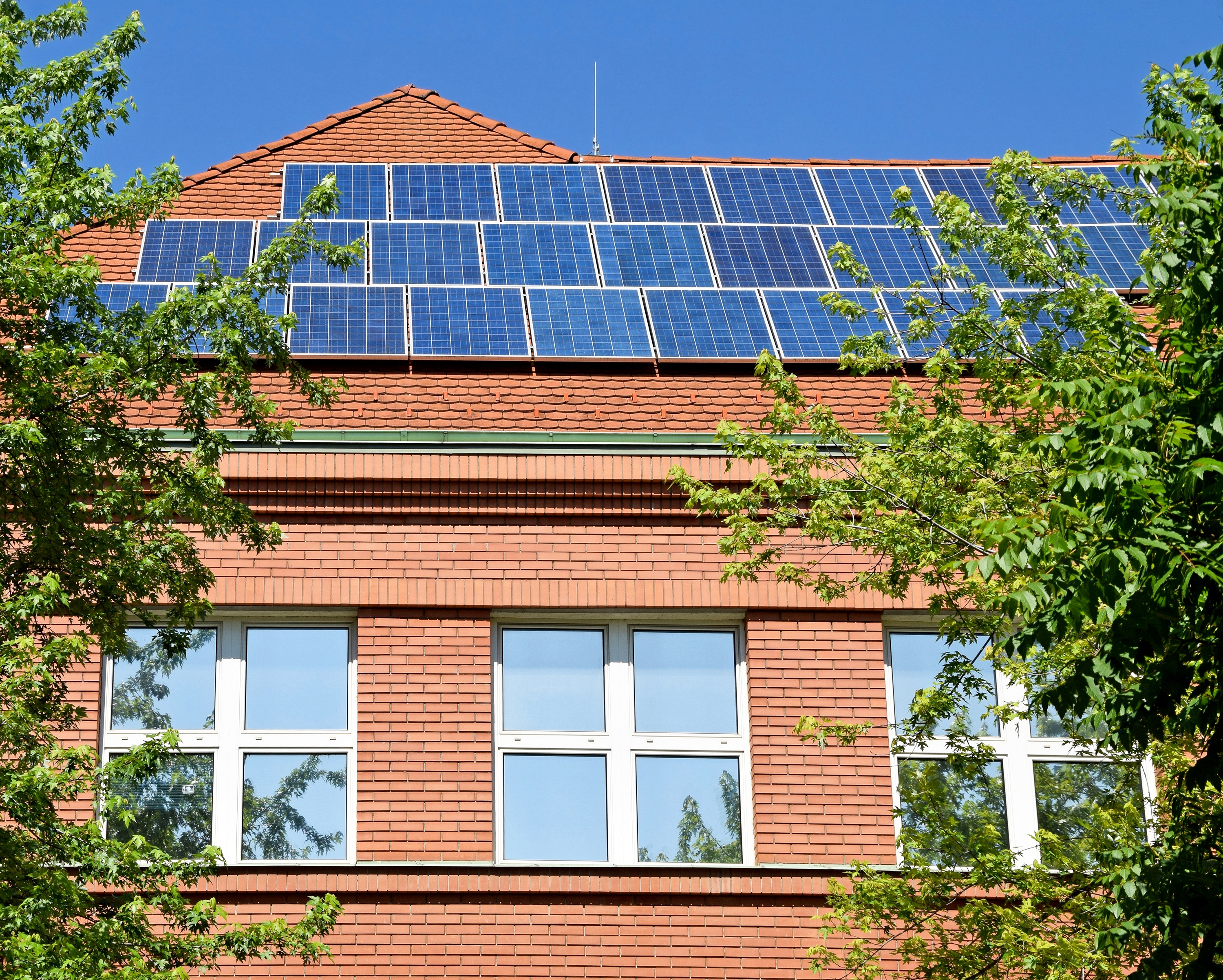Resources — Other Resources
Twitter Chat: Addressing Climate Change Through School Infrastructure

On October 26 we hosted a Twitter chat on opportunities for school infrastructure to address climate change. Take a look at some of the ideas and resources shared during the conversation!
Q1: Our 98,000 public schools, sit on over 2 million acres of land, operate 480,000 school buses, serve over 7 billion meals each year, and educate over 50 million students. Why is it important to make investments in school infrastructure and transportation?
Going #solar brings more to the educational landscape than just a new source of electricity. It helps schools reduce energy costs, free up capital to invest in curriculum and teachers, & provides students with new learning opportunities. #solarforallschools #K12ClimateAction https://t.co/oyes8dgC7F
— Generation180 (@Gen_180) October 26, 2021
A1: Fixing school buildings can improve both health and student learning. Improvements such as better lighting, acoustics, and accessibility help all students, including students with disabilities, learn. #K12ClimateAction https://t.co/2exFzG1eH9
— NCLD (@ncldorg) October 26, 2021
Q2: Let’s start with the House Build Back Better Act which includes about $80B to update school facilities. How could schools use this funding to promote student health & learning and help schools advance Climate Action?
A2: Schools represent 2nd largest sector of public infrastructure spending, after highways. Over half of school districts are in need of major repairs, most frequently HVAC systems. According to @BerkeleyLab properly ventilated rooms can increase student performance by up to 15%! https://t.co/yJfZ615Q41
— Sierra Club (@SierraClub) October 26, 2021
A2: One key investment schools can make is prioritizing outdoor spaces for play and learning through #GreenSchoolyards. Our #SpaceToGrow partnership in Chicago creates green and natural spaces that support student learning, community and climate resilience. #K12ClimateAction https://t.co/H7GeNVJQPC
— healthyschools (@healthyschools) October 26, 2021
Q3: Schools are facing disruptions to learning from climate change (heat, wildfires & floods). But with schools in every community, they can help build climate resilience. How can investments in school infrastructure build resilient schools and communities?
A3: Schools occupy over 2M acres of land. That’s a lot of space! This article from our eeRESEARCH library provides evidence for the value of green infrastructure in schools. #K12ClimateAction https://t.co/Xmy2ynMg6D https://t.co/vdDdkhPajv
— NAAEE 🎓🌎 (@TheNAAEE) October 26, 2021
A3: Schools are community shelter sites during severe storms. Solar + battery storage provides reliable backup electricity during grid failure. Electrifying 🚍 also strengthens our resilience, as batteries store power/feed back into grid in times of emergency & high energy demand https://t.co/DZYZz49skK
— Sierra Club (@SierraClub) October 26, 2021
Q4: Emissions from our nearly 480,000 diesel school buses impact climate change & harm student health. The Bipartisan Infrastructure Deal would include up to $5B for electric school buses. How do electric buses benefit communities, schools, & the environment?
Electric school buses would not only benefit the children who ride them, but would reduce pollution across entire communities. School districts with low-income children whose health is at greatest risk would benefit the most. https://t.co/oXm4emrRFF
— Environmental Law & Policy Center (@ELPCenter) October 26, 2021
Kids riding diesel buses are exposed to pollution levels up to 12x higher than outside. This impacts lung development and puts children at a higher risk for cancer. It can even cause cognitive impairment. Electric school buses are tailpipe-pollution free! https://t.co/GLlmBdbWw8 https://t.co/NYGL3e69xC
— eschoolbus4kids (@eschoolbus4kids) October 26, 2021
Q5: The Bipartisan Infrastructure Deal includes funding for replacing lead service lines and increasing access to broadband. How can those investments help schools?
A5: In Flint, MI, the proportion of students receiving special education services has grown over 50% since the lead-tainted water crisis began. The EPA has linked lead exposure to learning disabilities and other developmental problems. #K12ClimateAction https://t.co/GsCiiKogbL
— NCLD (@ncldorg) October 26, 2021
A5: Removing lead service lines puts students’ safety first.💧Access to broadband helps students participate fully in their education online or in person, and especially for students in rural communities where access to broadband is not as readily available. #K12ClimateAction https://t.co/HRMvVkuKgy
— NAAEE 🎓🌎 (@TheNAAEE) October 26, 2021
Q6: Communities of color and low-income communities are already facing the greatest impacts of climate change and education funding inequities. How can federal investments in sustainable school infrastructure help advance equity and environmental justice?
#K12ClimateAction A6: Schools can understand what their community needs the most and provide sustainable, healthy strategies to address those needs. Not all communities are the same and our most underserved have different needs in creating healthy, sustainable learning spaces.
— CtrForGreenSchools (@mygreenschools) October 26, 2021
A6: Communities of color impacted by historic, multi-generational disinvestment are in need of a historic federal investment to begin to correct the disparate impacts on student health and neighborhood environmental conditions. #K12ClimateAction https://t.co/sbMt9sqPQg
— healthyschools (@healthyschools) October 26, 2021
Q7: Students are the primary stakeholders in schools and their futures depend on the decisions we make today. How will school infrastructure investments that help schools advance climate solutions benefit students?
A7: If students learn in spaces that integrate #ClimateSolutions, they’ll understand how everyday actions relate to climate. Such investments are the springboard to a lifetime of climate awareness & engagement with sustainability and climate solutions. #K12ClimateAction https://t.co/FMpqlgatdK
— NAAEE 🎓🌎 (@TheNAAEE) October 26, 2021
+10 million U.S. children 17 and younger are diagnosed with asthma. Students with asthma miss an average of 8 days of school per year!
— Environmental Law & Policy Center (@ELPCenter) October 26, 2021
Switching to #ElectricSchoolBuses will
1⃣reduce harmful emissions
2⃣ reduce asthma triggers
3⃣get kids in class
4⃣ #ActOnClimate https://t.co/zPIrjnrWl5
#K12ClimateAction A7: Investing in school #infrastructure demonstrates the values needed for a sustainable future and by incorporating the school building into curriculum, we introduce the opportunity for green careers that will propel us into a sustainable future
— CtrForGreenSchools (@mygreenschools) October 26, 2021

